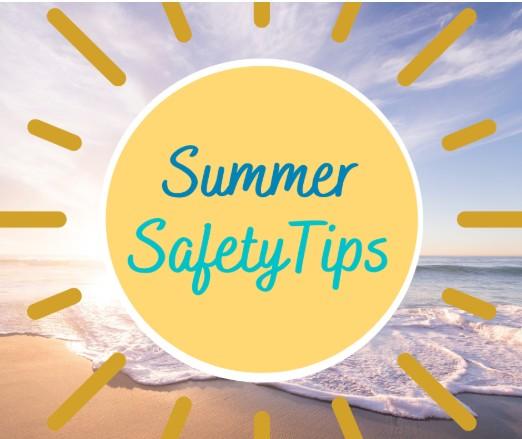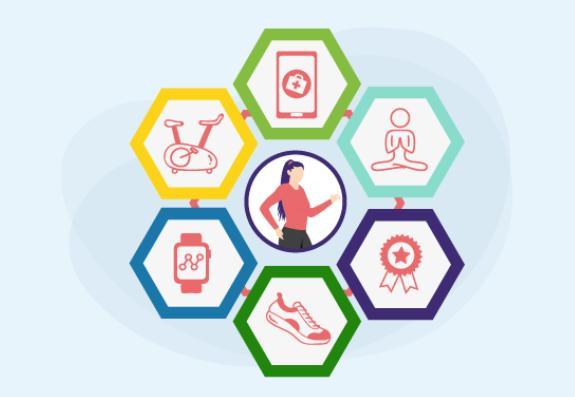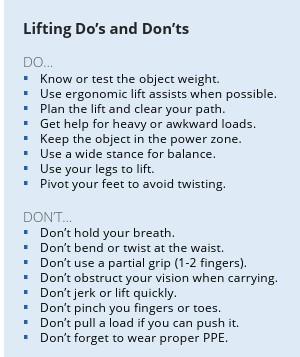SAFETYMATTERS




Fire Safety; Employee Wellness; Hot Cars; Safe Lifting







Each year Fire-related incidents cause thousands of injuries, millions in property damage and significant disruptions across public and private sectors. Riverside County Fire averages nearly 400 fire-related calls weekly, underscoring the importance of prevention, awareness, and readiness across all workplaces.

MENIFEE TIRE LOT FIRE- 6/23/2025




Frayed cords or overloaded outlets
Unusual odors (eg. burning plastic)
Missing, broken or blocked fire alarms
Dry vegetation around property Hot, dry, windy conditions


P ULL THE PIN
AIM AT THE BASE OF THE FIRE
S S QUEEZE THE HANDLE
WEEP SIDE TO SIDE
R A C E
ESCUE anyone in danger if safe to do so
CTIVATE the fire alarm and call 9-1-1
ONTAIN the fire by closing doors and windows
VACUATE or EXTINGUISH only if trained or safe CHECK YOUR SURROUNDINGS

Countydepartmentscancontributeto wellness by creating a culture that supports health, lowers stress, and encourages a positive work atmosphere.
Why it
-
Employee wellness helps create a healthier, happier, and more productive workplace. Small efforts can make a big difference in helping employees feel supported both at workandintheirdailylives.


~FitnesschallengesWalkinggroups
~Ergonomicworkspacesand injuryprevention
~Healthscreeningsand vaccinations
~Nutritionprogramsorhealthy snacks


~PromoteEmployeeAssistance Program(EAP)
~Flexibleschedulestosupport work-lifebalance
~Stressmanagementworkshops
~Mindfulnessormeditation sessions
~Retirementplanningsupport (401(k),etc.)
~Studentloanrepaymentor tuitionassistance
~Planningorbudgetingworkshops
~Educateaboutbenefitsand healthcarecosts
~ Plan regular team-building or social events ~ Encourage peer recognition and appreciation ~ Support professional development and career growth ~ Promote inclusive workplace practices ~ Maintain open communication and respectful feedback channels

It seems like yesterday we were trying to keep warm and dry; well, say goodbye to the umbrellas and jackets as summer is just around the corner. Even though many of us work from home, some must still get into our vehicles. That being said, we should be aware of the dangers of heat emergencies when entering our vehicles. Did you know that within 20 minutes of being parked in the sun, a car heats almost 30 degrees Fahrenheit (F) more than the outside air temperature? Within one hour, the temperature inside the car will be about 45 degrees F, hotter than the outside temperature. So, on a July or August day when it’s 105, the inside of your car could reach a sizzling 150 degrees!



JUNE 18, 2025

This assessment shows how quickly a car’s interior temperature can increase depending on the time of day and location. Each measurement was taken at a 10-minute interval.

Level 5 (Roof)

Below are some tips to consider when entering or exiting your car on hot spring and summer days:
1. Use a sunshade or window visor. This tried-and-true method of keeping your car cool should be your goto option to counteract hot interior temps throughout the summer. Put up a sunshade or window visor every time you exit your car for more than a few minutes. Keep it even cooler for long periods by putting a sunshade in your rear window as well.
2. Use a dash cover. A fabric or upholstered dash cover can go a long way toward making your car's interior more comfortable. You won't feel as overwhelmed by the heat if you don't have to touch hot vinyl surfaces. Dash covers also protect sensitive vinyl from sun damage that can cause cracking and fading.
3. Cover your steering wheel with a hand towel. Even if you use a sunshade, covering your steering wheel with a small towel is a good idea. This will help to keep the contact temperature of your steering wheel down.
4. Park in a shady area. Whenever possible, park in a shady area. If you're going to be somewhere for an extended period of time, it's worth it to walk a bit farther in order to park in the shade. You'll be happy to enter a not-so-hot car when you return from your day out.


5. Keep your precious possessions out of the sun. Any tapes, CDs or delicate items that you keep in your car should be stored out of the path of direct sunlight. Try storing your tape and CD cases underneath the seat. You can also throw a blanket over your precious possessions. If you can't find a place in your car that will conceal heat-sensitive goods, consider placing them in the trunk.
6. Park in a garage when possible. Whenever possible, park in a garage. Your car will be out of direct sunlight and benefit from near-constant shade. Even a warm garage beats being parked in the sun all day.
7. Keep windows slightly cracked. While it's not a good idea to leave your windows all the way open, it is a good idea to leave them slightly cracked. Check to be sure that you can't fit your arm through the crack in your window. Even a small crack will promote ventilation and help to keep your car cool.

8. Purchase a solar-powered fan. Paired with cracked windows, a solar-powered fan can make your car feel downright pleasant during even the hottest summer days. These simple fans work to expel hot air from your car, lowering its overall temperature by creating constant air circulation.
9. Throw blankets over your seats. If your car features vinyl or leather seats, you know just how hot these materials can become when exposed to sunlight and high temperatures. To keep car seats cool, throw blankets over them. When you return to the car, you can place the blankets on the floorboards or toss them in the trunk. Keeping your seats cool will make your car more pleasant on hot summer days.
10. Leave your doors open before getting in. Before jumping into your hot car, leave the doors open for a few minutes. This will help the hot air exit and the cool air enter.

• Be aware of your seatbelt buckles. Most seatbelt buckles are metal. When hot, they can touch your arm, hand, leg, or any other body part and cause skin burns.
• If your car has air conditioning, open all windows when the vehicle is in motion to purge out that hot, stagnant air for 1-2 minutes before using it.
• If your car has a remote start system, use it!
• If you can, invest in a good window tint. In addition to protecting your car’s interior, tints can reduce the internal temperature by up to 10 degrees.
• Never under any circumstances leave children, special-needs persons, the elderly, or pets unattended in a car.


According to the Bureau of Labor Statistics (BLS), back injuries account for one of every five injuries and illnesses in the workplace. Eighty percent of these injuries occur to the lower back and are associated with manual materials handling tasks. Lifting-related injuries include sprains, strains, neural related, neuromuscular related injuries and/or bone related injuries. These injuries can affect any part of the body, but the majority occur to the lower back.
Back strain is probably the one most common type of injury. A back strain usually results from over-stretching certain muscles. Another type of injury that can result from lifting incorrectly is a hernia, both injuries can be extremely painful. Both are usually the result of incorrect body mechanics and/or extreme exertion. The good thing is that all injuries that may result because of incorrect lifting are 100% preventable.

Basic Diagonal Lifting Technique :
1. Get as close to the object as possible.




2. Use a wide stance with one foot forward and to the side of the object for good balance.
3. Keep your back straight, push your buttocks out, and use your legs and hips to lower yourself down to the object.
4. Slide the object as close to you as possible.
5. Put the hand (same side of your body as the forward foot) on the side of the object furthest from you.
6. Use this basic lifting technique for small objects when you can straddle the load and use a wide stance.
7. Put the other hand on the side of the object closest to you. Your hands should be on opposite corners.
8. Grasp the object firmly with both hands.
9. Prepare for the lift, tighten your core muscles, look forward and upward, keep a straight and strong back.
10. Lift slowly and follow your head and shoulders. Hold the load close to your body. Lift by extending your legs with your back straight and breathe out as you lift.



